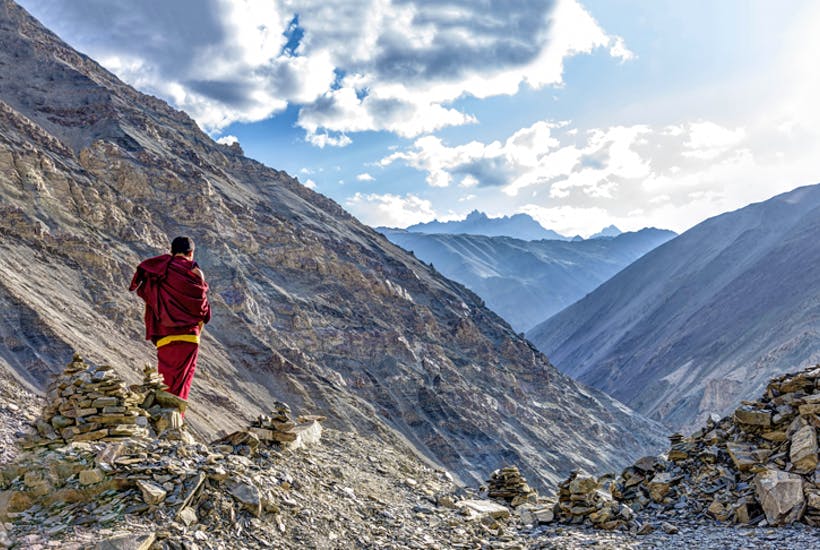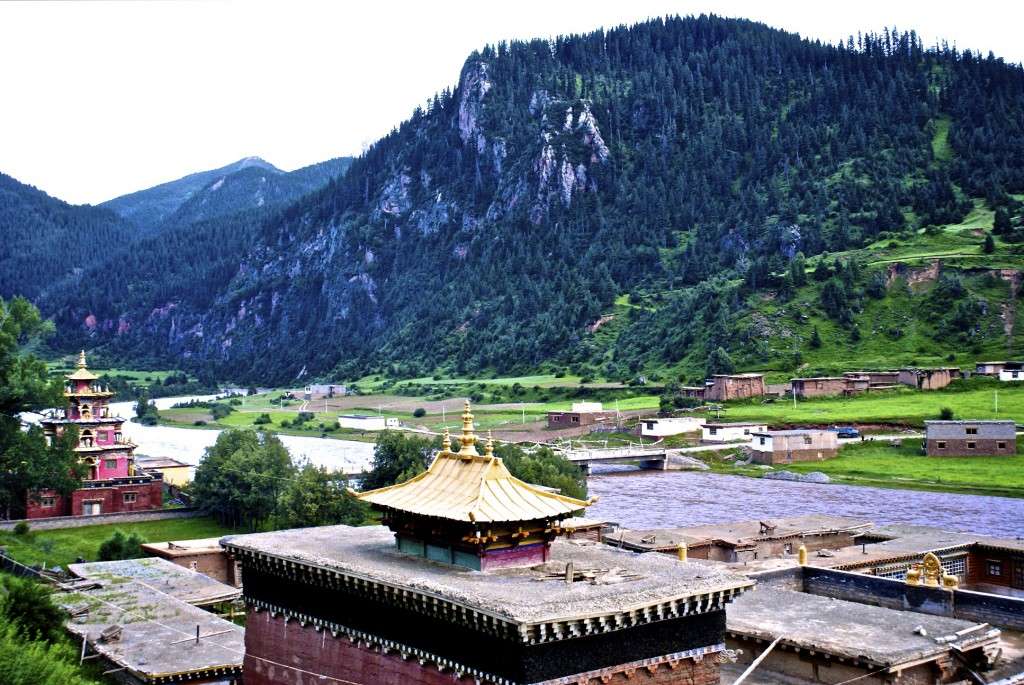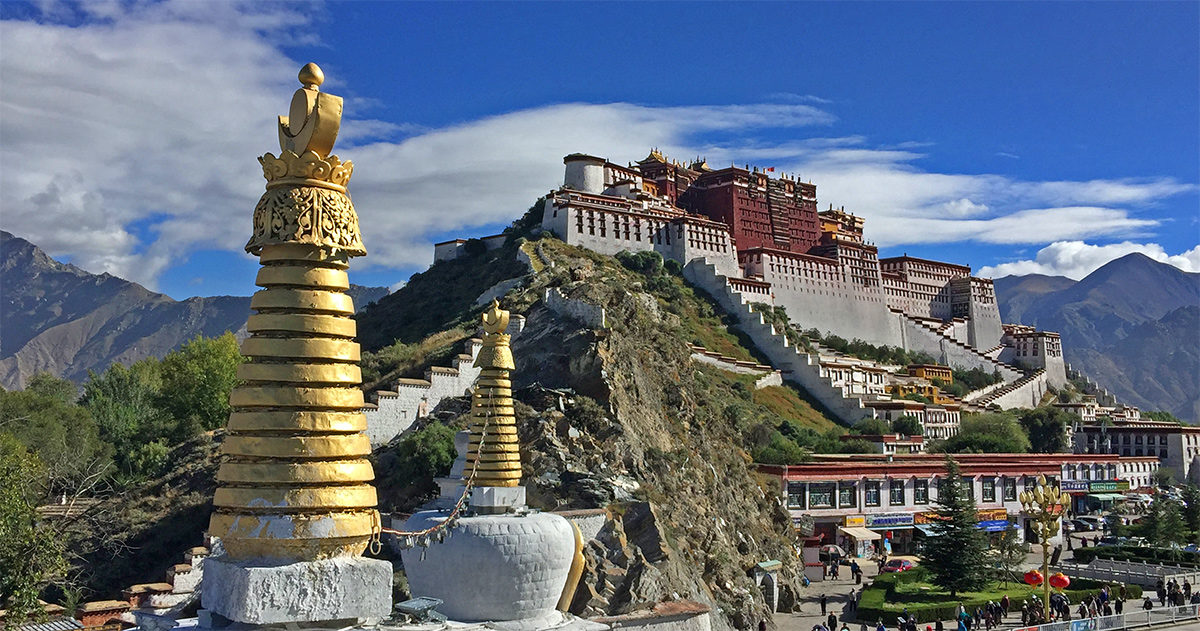Tibet, known as the Roof of the World, is the highest place to heaven, with an average elevation of 4,900 meters. Located in a plateau north of the Himalayas, it is a mysterious, exotic place that many outsiders yearned for. Since the beginning of the 20th century, the massive, tranquil land with its majestic scenery and mysterious religious culture has exerted an awesome draw on travelers. If it is your first time in Tibet, you cannot miss the top attractions listed below, because they represent the most authentic Tibet.
Tourist attractions
Lhasa: Lhasa, the capital of Tibet Autonomous Region, is a unique and spiritual city on a snow plateau. Lhasa is also known as the “City of Sunlight” for it enjoys much more sunshine than most places in the world. As the holy land of Tibetan Buddhism, Lhasa boasts numerous well-preserved Buddhist constructions, most of which are mysterious palaces and monasteries.
All the holy sites are well protected and carefully maintained by a devout population. Therefore, after a thousand years of vicissitudes, the ancient palaces, temples, relics and streets thick with religious history can still keep pace with the modern society.
Shigatse: Shigatse (along the Sino-Nepal Friendship Highway), also named Xigatse, is the hub of the road network between Lhasa, Nepal and western Tibet. All these tourist attractions in Shigatse have already received millions of pious pilgrims.
The tourist sights in Shigatse are composed of great natural sights and grand monasteries: Mount Everest, Mount Cho Oyu, Rongbuk Glacier, Peikutso, Tashilhunpo Monastery, Palkor Chode Monastery, Phuntsoling Monastery and Jonang Kumbum, Sakya Monastery, Shalu Monastery, Rongbuk Monastery, Yungdrungling Monastery, Pala Manor, Nartang Monastery among others.
Ngari: Nagri (also Ali) prefecture in northwestern Tibet is known as the roof of the world for it is situated at an elevation of 4,500 meters above sea level. It is the place where the Himalayas, the Gangdise, the Kunlun Mountains and Karakorum Mountains meet. This area is dotted with beautiful lakes and rivers, great mountains and glaciers, vast grasslands, spectacular snow mountains, as well as pastures and clay forests.
Nyingchi: Nyingchi is home to a huge well-preserved forest with many ancient and rare trees. The tourist sights in Nyingtri are mainly natural marvels. But the Nyingchi tourist attractions are not just for sightseeing. Nyingchi, “The Switzerland of Tibet”, is also a dream destination for adventure lovers and daredevils.
Here is a short list of the main tourist sights in Nyingchi: Draksum-Tso/Basum-Tso, Lunang Forest, 2500-year-old cypress trees, Namcha Barwa Mountain, Sacred Benri Mountain, Medog Natural Reserves, Zayu Natual Reserves, Yigong National Geological Parks, Buchu Monastery, Lamaling Temple, Taktse Monastery, Dodung Monastery, Galang Palace Ruins and Folk Culture Village.
Nagqu: Nagchu tourist include Nagchu Horse Racing, Xiangxiong Kingdom and Siling-Tso among others.
Tsedang: Tsedang tourist attractions consist of both cultural and natural sights offering tourists insights into “the cradle of Tibetan Civilization”, the specutacular landscapes on birthplace of Tibetan people.
Chamdo: Chamdo, situated in the east of Tibet, is the home of Khamba culture. Its complicated topography and wonderful landscapes make many great tourist sights like snow-capped mountains, fast-running rivers, thundering waterfalls, and dense forests. Besides these, ancient monasteries, buildings, steles, villages and workshops are also tourist attractions in Chamdo. Among the famous tourist spots in Chamdo are Chambaling Monastery, Karma Temple, Riwoche Monastery, Tsedrug Temple, Carnot Ruins and Rawok Lake.
Mount Kailash: As the main peak of the Gandise Mountains, Mount Kailash is the most famous holy mountain (Bonri Mountain and Himalayas are also holy mountains in Tibet) in Asian history. With four distinct sides, the gigantic pyramid has a round cap covered in eternal snow and ice. Standing far above surrounding mountains, Mount Kailash is just like a majestic ruler of nature.
At an elevation of 6,656 meters above sea level, snow-capped Kailash gives life to four grand rivers: Shiquan river, meaning Lion Fountain, known as Indus river in the lower reaches; Maquan river, meaning Horse Fountain, the origin of Yarlung Tsangpo river; Xiangquan River, meaning Elephant Fountain, known as Sutlej in the lower reaches; Kongqu river, meaning Peacock Fountain, the origin of the Ganges river. The four rivers gained their names from the geological features of their origins.
Mount Everest: Mount Everest, known in Nepali as Sagarmatha and in Tibetan as Chomolungma, is Earth’s highest mountain above sea level, located in the Mahalangur Himal sub-range of the Himalayas. The international border between Nepal and China runs across its summit point.

Visa requirements
There are usually two types of visas issued for Indians wanting to make a journey to Tibet. There is a Tibet visa also known as Tibet Travel Permit for ordinary tourists, visiting most of the regions of Tibet. These ordinary tourists get their Tibet visa and make tour like every other international traveler. These tourists need to show their passport and Chinese visa to ultimately acquire the Tibet visa.
How to reach
Travelling from the US to Tibet is easy. All you need to do is firstly fly from the US to major Chinese cities like Beijing, Shanghai, Guangzhou, and Chengdu. Then, after you obtain your Tibet permit delivered to your hotel, you are on your way to either take Tibet train or domestic flight to Lhasa. Another option is to access Tibet from Nepal, due to its proximity. In this case, Tibet permit and group tourist visa are needed. And you may choose to take non-stop flight from Kathmandu to Lhasa or enjoy the epic Kathmandu to Lhasa overland trip.







